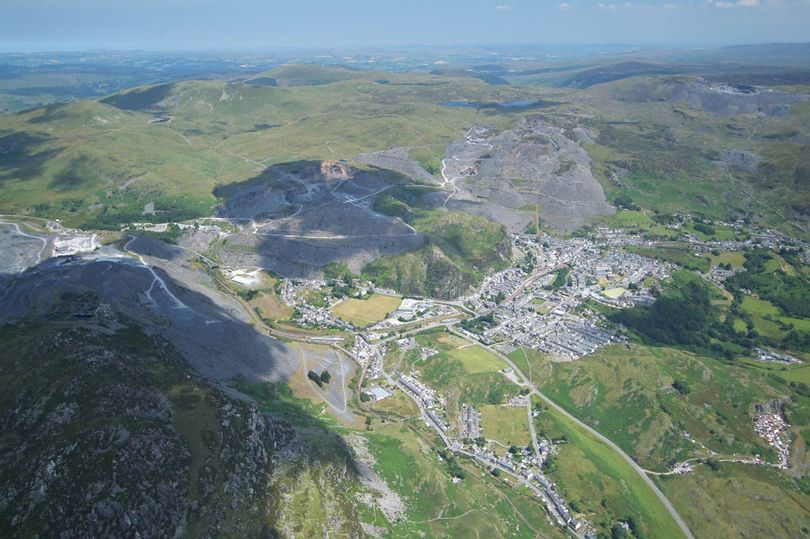March 2020
Read more
The report, presented to members on Tuesday, follows a public consultation which saw widespread backing of the plans which are hoped will bring a tourism and economic boost to the area.
The process, the cabinet was told, follows ten years of preparatory work and aims to highlight Gwynedd’s status as the world’s largest slate exporter during the mid-19th century.
Such status, which would see the towns and villages that “roofed the 19th century world” receive the same designation as the Grand Canyon and Great Barrier Reef, is a move Gwynedd Council hopes will result in regeneration and new jobs being created.
The industry, which employed 17,000 men during its heyday at the turn of the 20th century, fell into decline following bitter industrial disputes and the advent of war, but its legacy lives on in the landscape.
The bid in question includes six specific areas, namely:
If successful, these slate mining areas would become the fourth in Wales to receive the status after the Blaenavon industrial landscape, the castles and town walls of Edward I castles at Caernarfon , Harlech, Beaumaris and Conwy , and the Pontcysyllte aqueduct spanning the River Dee in the Vale of Llangollen.
Council leader, Dyfrig Siencyn, told the cabinet meeting that these communities were a “hotbed” of Welsh culture, and it was vital that this history was relayed to visitors.
Cllr Cemlyn Williams added,”We should remember that the heritage of our slate industry is as much engrained in the culture as it is on the landscape.
“As the son of a quarryman, I welcome this application and hope that it will be successful.”
The full application will be submitted to both UNESCO and the UK Government’s Department for Digital, Culture, Media and Sport in January.
But with site visits not expected to take place until October, a final decision will not be made until the summer of 2021.


Experience the perfect day at Gwernydd Hall Holiday Park! Whether you’re relaxing at the spa, catching a movie, dining at our pub, or exploring the stunning Mid Wales countryside, every moment here is pure bliss. 🌳🏡
Ready to make memories? Discover holiday home ownership today!
#Wales #Cymru #VisitWales #StaycationUK #Staycation #HolidayHomesUK #CaravanForSale #HolidayHomes #StaticHolidayHomes #HolidayHomeOwnership #Newtown #SchoolHolidays #FamilyHolidays

Discover the charm and natural beauty of Machynlleth with our ultimate walking tour! From historic streets to stunning valley trails, this Welsh gem has it all. Lace up your boots and explore Machynlleth`s hidden treasures! 🚶♂️🏞️
Get your guide on our blog.
#WalkingWales #WalksInWales #Machynlleth #MidWales #Cymru #Wales #VisitWales #StaycationUK

Longing for limitless getaways? When you become a proud owner of a Salop Holiday Home at any of our 10 beautiful parks, every month can feel like a holiday!
Explore our parks for more details - Pay NO SITE FEES until March 2025 on selected NEW caravans or lodges!
#Shrewsbury #Shropshire #Cymru #Wales #VisitWales #StaycationUK #HolidayHomesUK #CaravanForSale #HolidayHomes #StaticHolidayHomes #StaticCaravans #HolidayHomeOwnership #HolidayInWales

Bring your furry friends along to our dog-friendly parks and create unforgettable memories together! 🐾 Whether it`s exploring scenic trails or relaxing by your caravan, your four-legged companions are always welcome.
Start planning your next adventure with us today!
#DogFriendly #Shrewsbury #Shropshire #Cymru #Wales #VisitWales #StaycationUK #HolidayHomesUK #CaravanForSale #CaravanPark #HolidayHomes #StaticHolidayHomes #StaticCaravans #HolidayHomeOwnership #HolidayInWales

🏴 Get Ready for Wales Tourism Week! 🏴
This week we celebrate the beauty, culture, and adventure that Wales has to offer. Discover stunning landscapes, historic sites, and vibrant communities. Join us at Salop Caravan Sites to experience the best of Welsh hospitality and make unforgettable memories.
#WalesTourismWeek #ExploreWales #DiscoverWales #VisitWales
